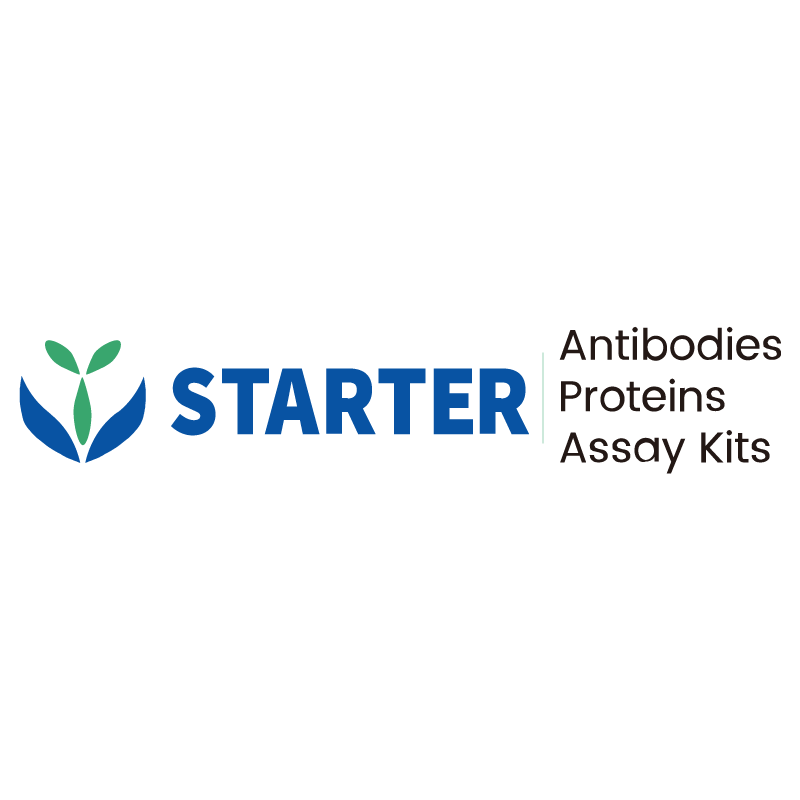IHC shows positive staining in paraffin-embedded human breast. Anti-TRPS1 antibody was used at 1/100 dilution, followed by a HRP Polymer for Mouse & Rabbit IgG (ready to use). Counterstained with hematoxylin. Heat mediated antigen retrieval with Tris/EDTA buffer pH9.0 was performed before commencing with IHC staining protocol.
Product Details
Product Details
Product Specification
| Host | Rabbit |
| Synonyms | Zinc finger transcription factor Trps1, Tricho-rhino-phalangeal syndrome type I protein, Zinc finger protein GC79 |
| Immunogen | Recombinant Protein |
| Location | Nucleus |
| Accession | Q9UHF7 |
| Clone Number | S-765-3 |
| Antibody Type | Recombinant mAb |
| Isotype | IgG |
| Application | IHC-P |
| Reactivity | Hu |
| Purification | Protein A |
| Concentration | 0.5 mg/ml |
| Conjugation | Unconjugated |
| Physical Appearance | Liquid |
| Storage Buffer | PBS, 40% Glycerol, 0.05% BSA, 0.03% Proclin 300 |
| Stability & Storage | 12 months from date of receipt / reconstitution, -20 °C as supplied |
Dilution
| application | dilution | species |
| IHC-P | 1:100 | null |
Background
TRPS1 protein is a multifunctional protein that plays a crucial role in cell proliferation, differentiation, and tissue development. It is widely expressed in various tissues of the human body, such as the prostate, testis, ovary, kidney, and breast, and is primarily located in the nucleus. Notably, TRPS1 RNA expression levels are the highest in the mammary gland and mammary tumor tissues. In deeper research, TRPS1 protein has been found to regulate the abnormal replication of DNA in heterochromatic regions marked by H3K9me3, leading to genomic instability. This molecular mechanism enhances our understanding of tumor genesis, progression, and evolution, and also provides insights into the pathogenesis of tricho-rhino-phalangeal syndrome (Type I hair-nose-finger syndrome, TRPS1). Furthermore, the TRPS1 gene is located in the human chromosome 8q24.12 region and encodes a protein that plays a vital regulatory role in embryonic development and bone formation. When the TRPS1 gene is mutated, it can lead to abnormal protein function, resulting in characteristic symptoms of Type I hair-nose-finger syndrome, including sparse hair, nasal deformities, and abnormal phalanges.
Picture
Picture
Immunohistochemistry
IHC shows positive staining in paraffin-embedded human breast cancer. Anti-TRPS1 antibody was used at 1/100 dilution, followed by a HRP Polymer for Mouse & Rabbit IgG (ready to use). Counterstained with hematoxylin. Heat mediated antigen retrieval with Tris/EDTA buffer pH9.0 was performed before commencing with IHC staining protocol.
IHC shows positive staining in paraffin-embedded human breast cancer. Anti-TRPS1 antibody was used at 1/100 dilution, followed by a HRP Polymer for Mouse & Rabbit IgG (ready to use). Counterstained with hematoxylin. Heat mediated antigen retrieval with Tris/EDTA buffer pH9.0 was performed before commencing with IHC staining protocol.
IHC shows no staining in paraffin-embedded human prostatic cancer. Anti-TRPS1 antibody was used at 1/100 dilution, followed by a HRP Polymer for Mouse & Rabbit IgG (ready to use). Counterstained with hematoxylin. Heat mediated antigen retrieval with Tris/EDTA buffer pH9.0 was performed before commencing with IHC staining protocol.
IHC shows no staining in paraffin-embedded human gastric cancer. Anti-TRPS1 antibody was used at 1/100 dilution, followed by a HRP Polymer for Mouse & Rabbit IgG (ready to use). Counterstained with hematoxylin. Heat mediated antigen retrieval with Tris/EDTA buffer pH9.0 was performed before commencing with IHC staining protocol.
Negative control: IHC shows negative staining in paraffin-embedded human kidney. Anti- TRPS1 antibody was used at 1/100 dilution, followed by a HRP Polymer for Mouse & Rabbit IgG (ready to use). Counterstained with hematoxylin. Heat mediated antigen retrieval with Tris/EDTA buffer pH9.0 was performed before commencing with IHC staining protocol.


